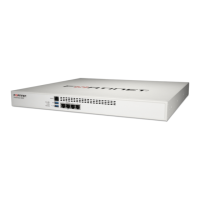Appliance Setup
Hardware Software
image)
Follow the below steps to re-image FortiSIEM.
Step 1: Create Bootable Linux Image
1.
Connect 4 GB USB drive to the system (desktop or laptop).
2.
Open Rufus.
3.
Select the following settings for the USB:
a. Partition scheme and target system type: MBR partition scheme for BIOS or UEFI
b. File system: FAT32
c. Cluster size: 4096 bytes (Default)
d. Quick Format: Enable
e. Create a bootable disk using: ISO image
4.
Click on the 'CD-ROM' icon and select the Ubuntu Setup ISO.
5. Click Start and allow Rufus to complete.
Once finished, the disk is ready to boot.
Note: Alternatively, you can use the Ubuntu guide for creating a USB drive with Ubuntu.
Step 2: Copy FortiSIEM Collector image to USB
1.
Connect 8 GB USB Drive to the system (desktop or laptop).
2. Open Windows Explorer > right-click Drive > click Format.
3.
Select the following options:
a. File system: NTFS
b. Allocation unit size: 4096 bytes
c. Quick Format: Enable
4.
Copy the image file to USB drive. For example:
FSM_Full_All_RAW_HARDWARE_6.1.2.0119.zip
5.
Safely remove the USB drive from the desktop or laptop by unmounting it through the operating system.
Step 3: Prepare 500F by removing FSM
1.
Connect to the console/SSH of the FortiSIEM appliance.
2.
Run the following command: execute fsm-clean
3.
Allow this command to run and power-off the FortiSIEM appliance.
FortiSIEM 6.1.2 500F Collector Configuration Guide 14
Fortinet Technologies Inc.

